5 Fresh Openings to Try Now in Athens
Discover five of Athens’ latest openings,...
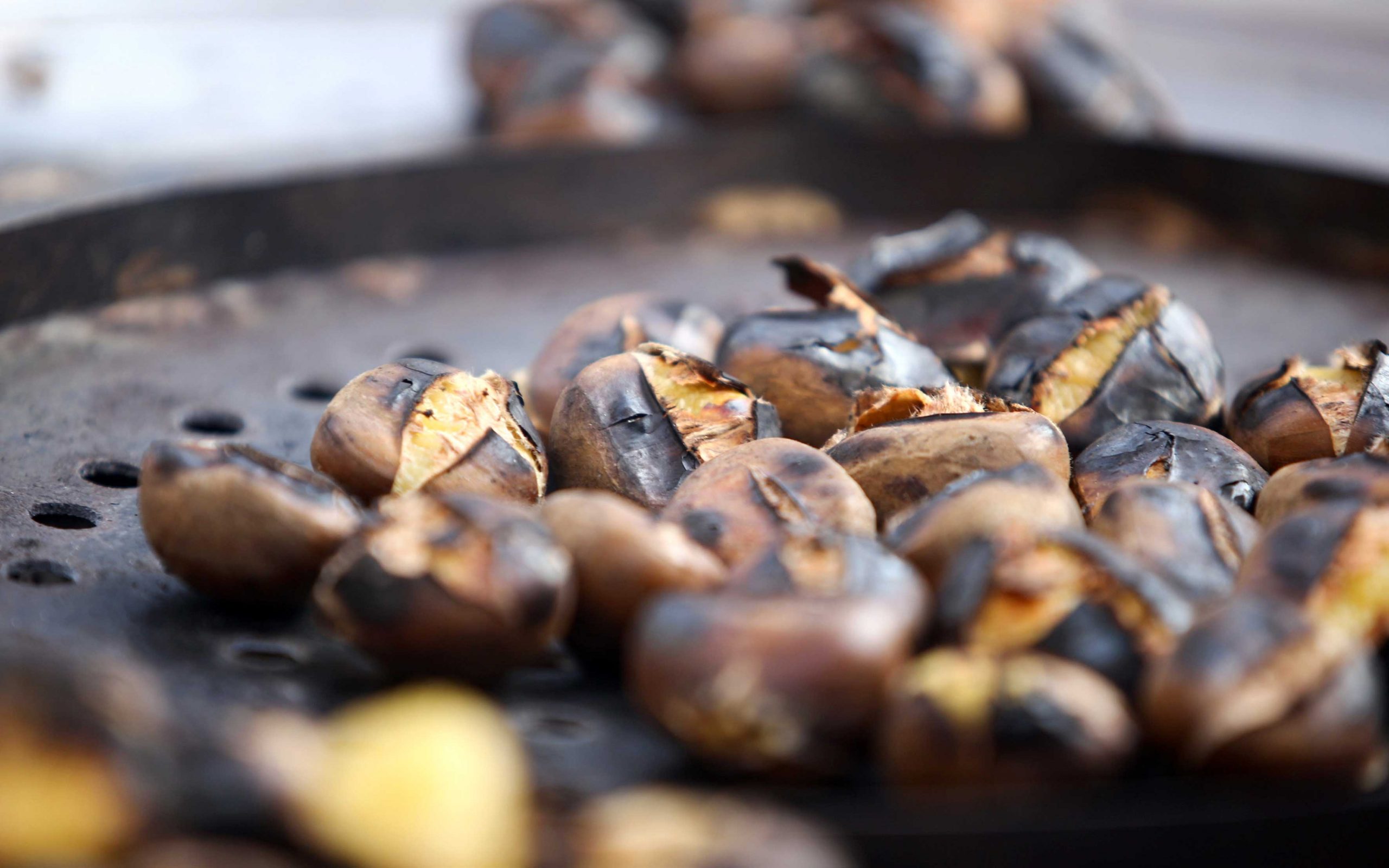
© Intime News
The first truly cold days in a Greek city can put you in a bit of a gloomy mood. Walking around the streets under grey skies, island beaches a figurative million miles away, the weekday seems a drag until… a smell suddenly tickles your nose, and year heart. Warm and sweet, it smells like a crackling fire and a treat all at once, and it’s the first sign of Christmas. There’s a street vendor ahead, and he’s roasting chestnuts.
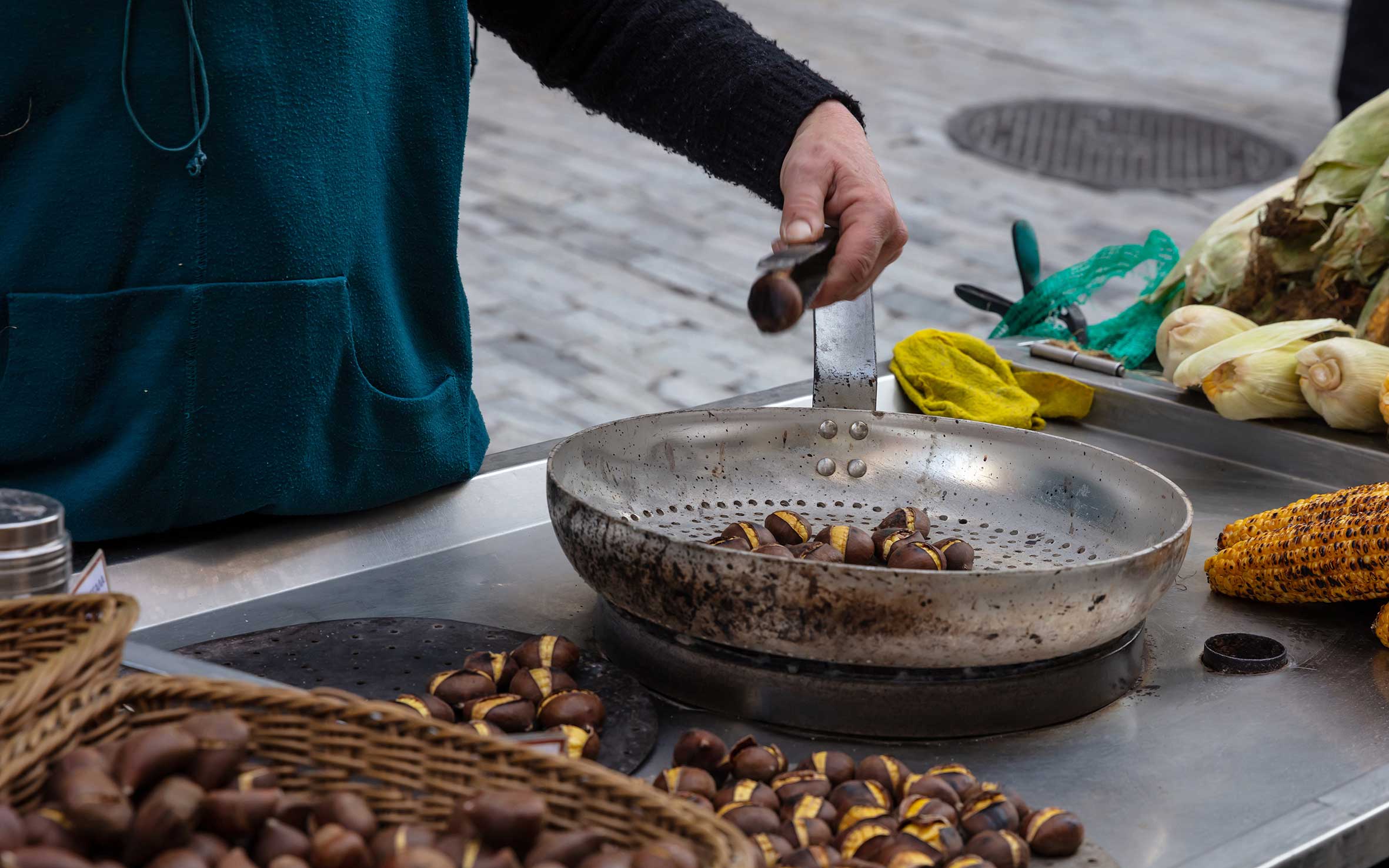
© Shutterstock
First, you enjoy them as a heat source, cupping your hands around the paper cone delivered to you by the kastanas (the vendor, from the word kastano, meaning chestnut), who cooks them to order on the grill in his portable stall. Then you peel one – too soon, and burn your fingers. The next one goes better. The charred, flaky shell breaks off to reveal the soft, mealy flesh. And what could be a better snack? Warm and sweet, festive and cheap, gluten-, sugar- and dairy free, vegan and Lenten (for those who partake in the nativity fast), the kastanades should, by some logical reasoning, all be millionaires. In reality, however, rather than seen as a delicacy or a trendy superfood, chestnuts are an everyman’s treat – once a staple food which kept poor generations in mountainous areas alive over centuries, if not millennia.
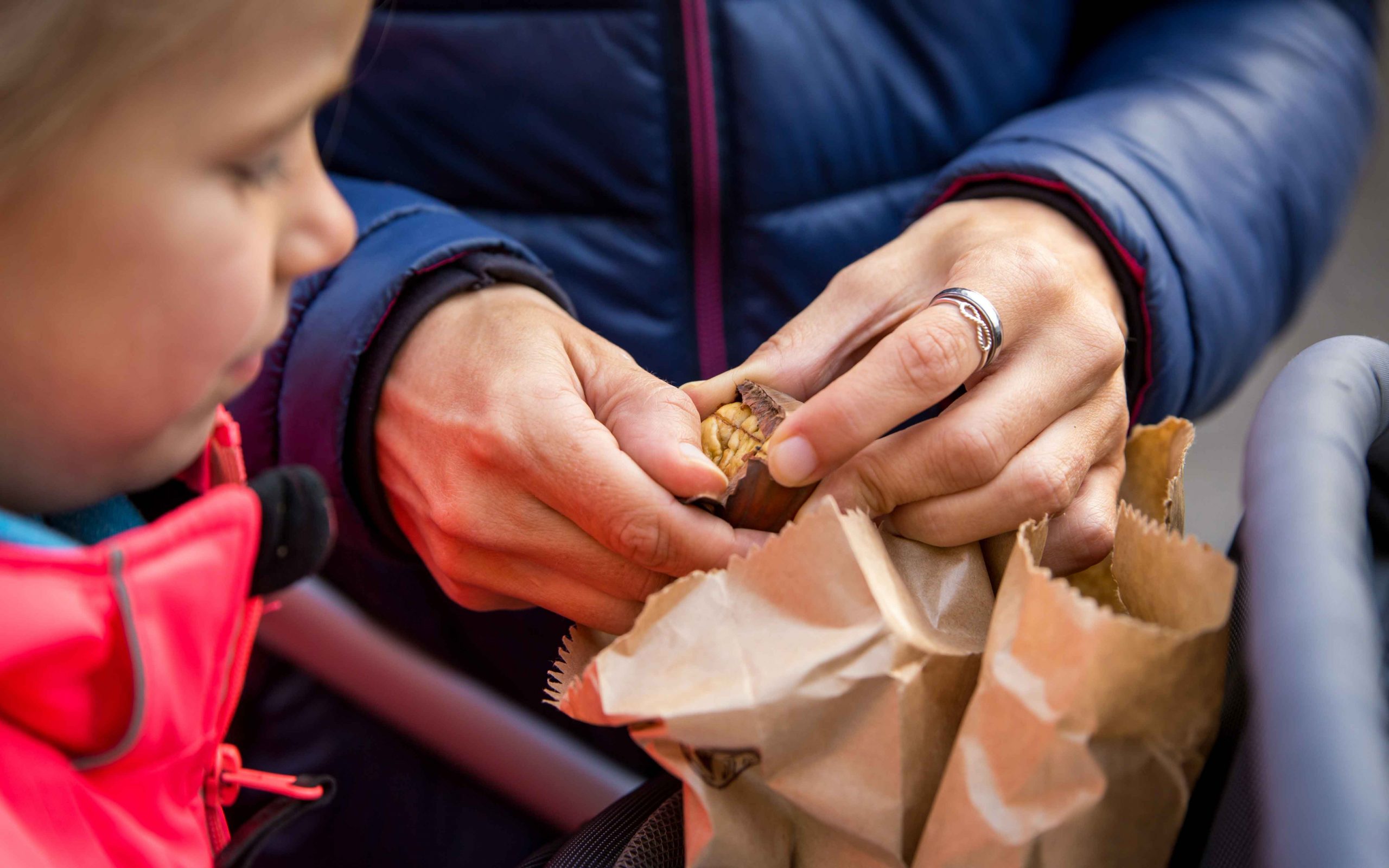
© Shutterstock
First brought to Greece by the Romans, the trees, heavy with plump and sweet chestnuts, are common in several areas around the country. The street vendors often favor the highly regarded nuts from Crete, which are small compared to those from other regions, but peel easily and pack loads of sweet flavor. Also popular are the ones that grow around the Pilio peninsula and the city of Volos, and a bit further north, in Melivoia, east of Larissa. The latter are particularly famous, due to their large size. Another variety grows in Laconia and Arcadia, on the Peloponnese. Less sweet, those are mostly used for cooking and baking.
During the holidays, chestnuts appear on dinner tables in turkey stuffing and stews. But they are even more popular for dessert. From the time they are harvested in late fall and throughout the holidays, chestnuts are a favorite ingredient among Greek pastry chefs, whose shops pile platters high with French marrons glacé (candied chestnuts), puree them for traditional mon blancs, bake them into tsoureki, and add them to chocolate logs, and much more.
Below are two of our best recipes that almost effortlessly make it feel like Christmas. So buy yourself a bag of chestnuts, turn Nat King Cole up loud, and follow our instructions.
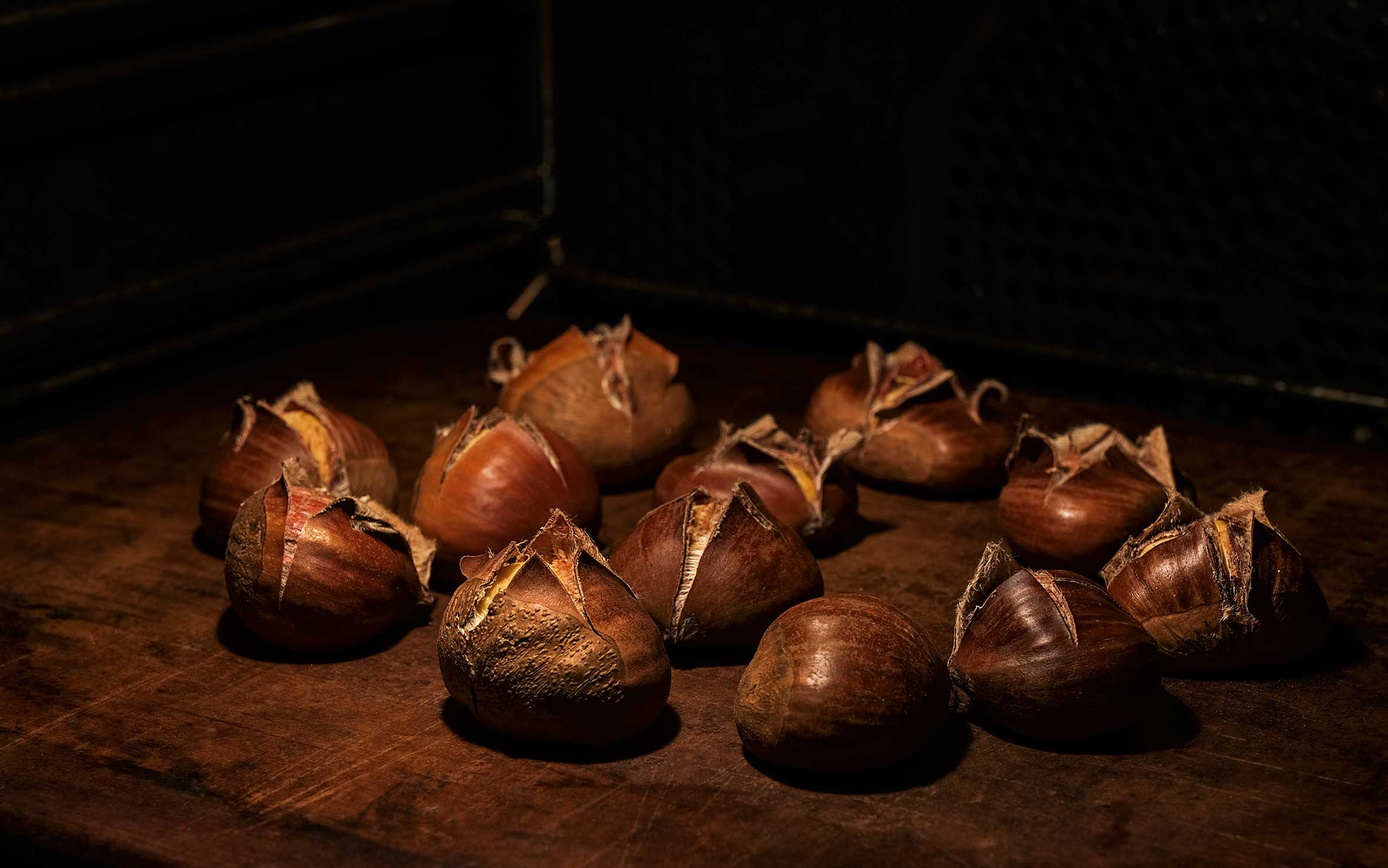
© Shutterstock
While roasted chestnuts are popular in many places around the world throughout the winter, there is something about the smell when the vendors toss them on the grill that makes us think of home, and of Christmas. To make your home smell like Greek holidays, you can easily roast some in your own oven. Here’s how:
Cut a large cross through the shell (but not the flesh) of each nut.
Place them cut side up in an oven-proof pan, along with two tablespoons of water. Roast for about half an hour in a preheated, 200°C oven.
Remove from the oven, cover the pan (trapping steam inside will make the chestnuts easier to peel), and let cool for a bit.
Peel and enjoy.
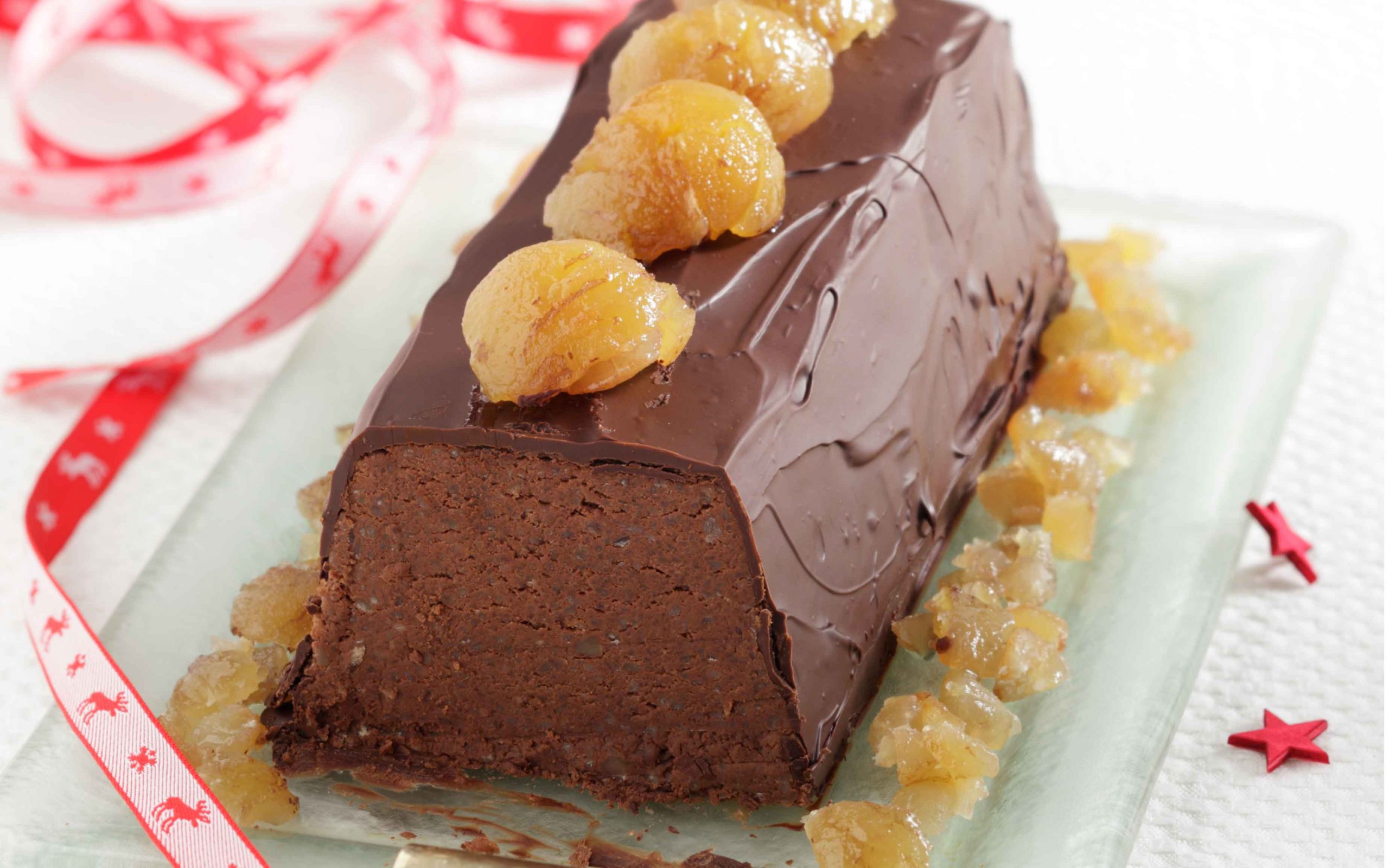
© Petros Andrianopoulos
Chocolate logs are a popular and easy, no-bake dessert all year round in Greece. For Christmas, try this version, enriched with a generous amount of pureed chestnut.
Melt the chocolate in a bain-marie, and set it aside to cool.
Add the chestnuts to a food processor, and pulse until almost a fine puree (if there are still some chunks left, that’s okay).
Combine the butter and sugar with an electric mixer until smooth. Add the melted chocolate, chestnut and cognac, and stir to combine.
Cover a loaf tin with plastic wrap, and empty the batter into it, pressing with a spoon to make sure it reached all the corners. Fold the plastic wrap over the top.
Place your log in the fridge to set for three hours.
Once set, place your chestnut chocolate log on a serving platter, and cover with cocoa or melted chocolate.
This recipe was previously published in Greek at gastronomos.gr.
500 g dark chocolate
1 kg boiled and peeled chestnuts,
200 g butter
100 g sugar
4 tbsp cognac
good quality cocoa or melted chocolate, for topping
Discover five of Athens’ latest openings,...
A Thessaloniki expert selects 13 spots...
Three traditional products serve as both...
In Crete, xerotigana are the quintessential...